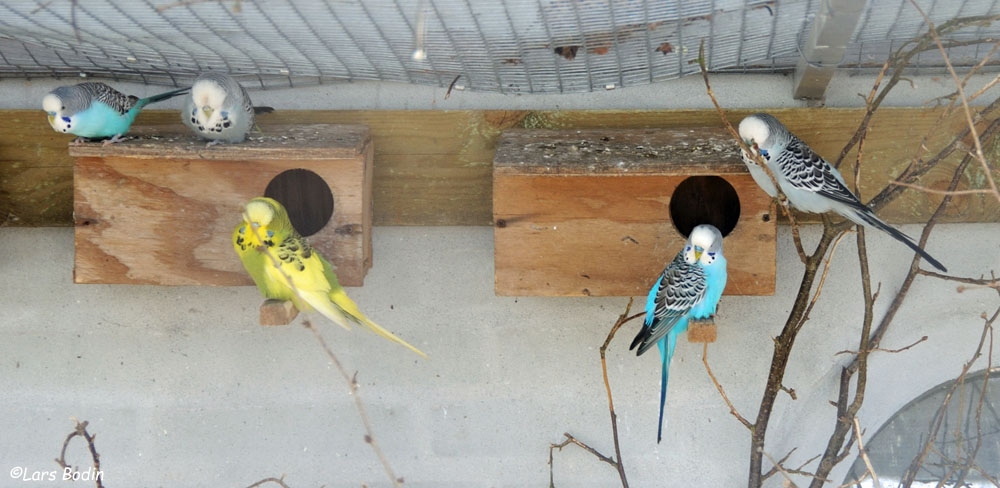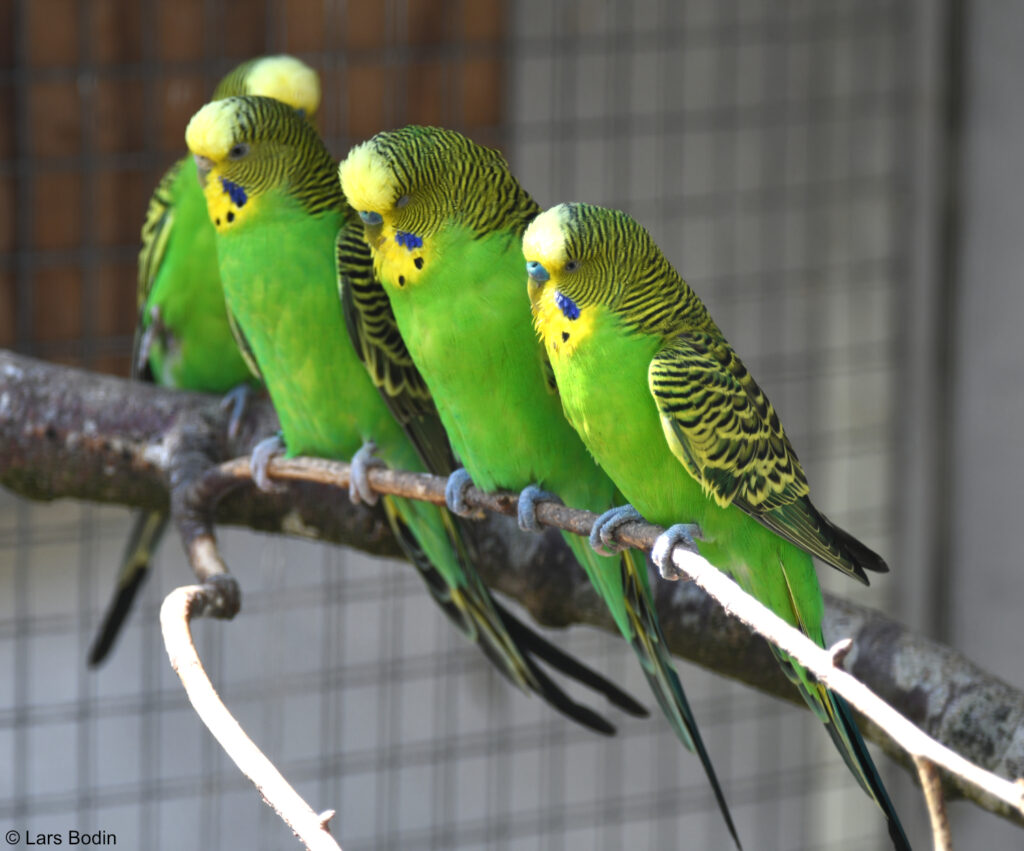Melopsittacus undulatus - Budgerigar
Budgerigar – Melopsittacus undulatus (Shaw, 1805) – is one of the most common pet birds; for many this is the first pet bird and it is very suitable for beginners as it is easy to tame and do not require much space. They should however be taken out of the cage as often as possible, as they are very social birds and bonds strongly with the owner.
The Budgerigar are very talkative but not noisy like some of the larger parrot species and is a suitable pet parrot if you live in an apartment. They can learn to mimic simple words and sentences, although they are not as skilled with the pronunciation as some of the larger parrot species.
They are very funny and love to play – make sure to provide plenty of bird safe toys.
With proper care extected lifespan is 10-15 years.
It is categorized as Least Concern by the IUCN Red List. It is not listed in CITES.
Description
Head, neck and wings are yellow with scalloped black patterns. The lower back and underparts are bright green. Lower cheeks have a violet/blue patch, especially on females. Some black spots under the throat. Long narrow blue tail. White eyes. Olive/horn colored bill.
Males have a blue cere – females have a brown cere.
Juveniles are more dull; less black spots on throat or none at all; shorter tail; dark eyes.
Size: 18-20 cm
Weight: 22-32 g
In aviculture several color mutations have been breeded including yellow, blue and grey as shown on the photo above.
Subspecies
None.
Habitat
They are widely distributed through the interior of Australia but rare in the coastal eastern districts and south west. They are found in both arid, semi-arid and subhumid regions.
Diet
They mainly feed on the ground, where they forage on grass seeds and seeds from crops.
Some pets have a tendency to become overweight so avoid feeding a seed mix with too much sun flower seeds as they are very fatty. The main part of their daily diet should be given as pellets e.g. ZuPreem. Also provide some high quality seed mix, fruits and vegetables.
Aviculture
The Budgerigar does not require a lot of space and can be kept in a small aviary. They love to take a bath so provide a bowl of water. Also provide some bird-safe branches and mineral stones to grind.
A vertical box about 20 x 15 x 15 cm (8″ x 6″ x 6″ ) is used as nest box. They are fairly easy to breed in captivity.
The clutch usually contains 4-8 eggs that are incubated for 18 days.
Fledging age: 30 days.
Taxonomy
- Order: Psittaciformes
- Family: Psittaculidae
- Genus: Melopsittacus
Synonyms
- Danish: Undulat
- English: Budgerigar, Budgie
- French: Perruche ondulée
- German: Wellensittich
- Portuguese: Periquito-australiano
- Spanish: Periquito Australiano, Periquito Común
- Scientific: Melopsittacus undulatus
IUCN Red List

https://dx.doi.org/10.2305/IUCN.UK.2018-2.RLTS.T22685223A132056957.en
Downloaded on 9 July 2021


